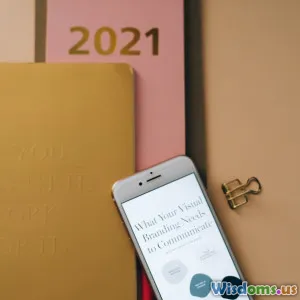
Language Learning Strategies for Professionals
8 min read Master language learning strategies tailored for busy professionals to excel globally and unlock career growth. (0 Reviews)
Language Learning Strategies for Professionals
In an increasingly globalized world, language proficiency has transformed from a luxury into a vital career skill. For professionals, mastering a new language offers more than an edge in communication—it can open international doors, foster deeper cultural understanding, and advance career trajectories. Yet, finding time and the right approach for language learning can feel overwhelming amidst busy schedules.
This article dives into practical, research-driven learning strategies tailored specifically for professionals. Whether you’re preparing for international assignments, negotiating with multilingual clients, or simply expanding your cognitive horizons, these methods will guide you to learn efficiently and effectively.
Why Professionals Need Targeted Language Learning Strategies
Unlike students or casual learners, professionals contend with constraints like tight schedules, job responsibilities, and often immediate performance expectations. The traditional classroom approach or passive learning is usually too slow or unfocused for real-world workplace needs.
According to the 2023 Language Learning Market Report by the Modern Language Association, professionals who actively engage with tailored learning routines accelerate fluency acquisition by 30–40% compared to unsystematic learners. This shows the immense value of structured, strategy-driven approaches.
By adopting targeted strategies, you can:
- Maximize limited time efficiently
- Enhance retention and practical application
- Align learning with career-specific vocabularies
- Maintain motivation despite professional pressures
Key Strategies for Successful Language Learning
1. Strategic Time Management: Carving Out Consistent Learning Windows
Consistency beats intensity. Scheduling dedicated, manageable time blocks daily or several times per week fosters better long-term retention than sporadic, lengthy sessions.
Example: Coach Julie Chen, a bilingual marketing executive, commits just 15 minutes during her morning commute on language apps followed by a 10-minute review post-lunch. This microlearning approach integrates seamlessly with her workday.
Research by the University of Cambridge shows spaced repetition benefits vocabulary retention by 50% over traditional cram sessions.
2. Immersive Learning: Bringing the Language into Your Daily Life
Immersion accelerates subconscious processing of new linguistic patterns. For professionals, this can be realized without relocating abroad by introducing the target language into everyday work and social environments.
Tactics for immersion include:
- Setting device interfaces (smartphones, computers) to the target language
- Labeling objects at home or office in the new language
- Watching professional webinars or conferences conducted in the target tongue
- Engaging with peers or native speakers via virtual language exchange platforms like Tandem or HelloTalk
This ongoing exposure enhances listening, comprehension, and colloquial skills beyond textbook lessons.
3. Contextual Learning: Tailoring Vocabulary and Scenarios to Professional Needs
Generic vocabulary rarely serves the niche requirements of specialized fields. Professionals benefit immensely from contextual learning focused on industry-specific terminology.
For instance, a legal consultant learning Spanish should prioritize legal jargon, contract-related phrases, and courtroom dialogue rather than casual conversational vocabulary.
Employers like Amazon and Siemens invest in customized language courses that emphasize sectorial linguistics, significantly improving employee efficiency on international projects.
4. Leverage Technology and AI-powered Tools
Cutting-edge apps such as Duolingo, Memrise, and Rosetta Stone use AI to adapt lessons to user progress and difficulty levels. Moreover, tools like Grammarly and LanguageTool offer real-time grammar corrections.
In 2022, a PwC survey revealed 68% of professionals found language apps crucial in accelerating their language learning effectively alongside work commitments.
5. Active Practice Over Passive Memorization
Passive learning, such as reading or listening only, limits speech confidence development. Active practices—speaking, writing, and thinking in the target language—create stronger neural pathways.
Practice methods:
- Scheduled speaking sessions with tutors or conversation partners
- Writing daily work summaries, emails, or journals in the new language
- Shadowing exercises where you mimic native speakers’ dialogues
Quotes from language expert Dr. Stephen Krashen emphasize that “language acquisition thrives on meaningful communication, not memorization.”
6. Set Measurable Goals and Track Progress
Clear, attainable milestones keep motivation high. Break down the ultimate goal (e.g., business fluency) into weekly or monthly checkpoints like mastering business presentations or client emails.
Utilize language tracking apps and logs to monitor vocabulary acquisition, speaking time, and comprehension.
7. Seek Social Accountability and Support
Community learning offers intrinsic motivation and feedback loops. Joining language meetups, professional groups, or online forums like Reddit’s r/languagelearning can foster accountability.
Professionals at Cisco Credit this peer environment for accelerating their confidence and reducing anxiety around language mistakes.
Case Study: How a Finance Manager Leveraged Language Skills to Advance Career
Sarah Lim, a senior finance manager in Singapore, aimed to master Mandarin to lead regional teams effectively. She adopted the following approach:
- Dedicated 20 minutes daily using an app with business modules
- Practiced speaking weekly with a mentor in the field
- Immersed herself by switching work communication to Mandarin gradually
- Attended industry seminars held in Mandarin-speaking regions
Within 18 months, Sarah confidently led cross-border negotiations, earning her a promotion. Her story underscores blending consistent practice, contextual learning, and immersion.
Conclusion
For busy professionals, mastering a new language demands more than enthusiasm; it calls for strategic planning tailored to career realities. By managing time carefully, immersing oneself consistently, focusing on relevant contexts, utilizing technology, and actively practicing, language acquisition becomes a feasible and rewarding endeavor.
The multilingual professional stands not only more competitive but better poised to engage globally with empathy and agility. Start embedding these strategies today, and watch your language skills—and career opportunities—flourish.
Ready to start? Identify your professional language goals and implement even one of these strategies to begin transforming your learning experience.
References:
- Modern Language Association, 2023 Language Learning Market Report
- University of Cambridge Spaced Repetition Research, 2021
- PwC 2022 Language Learning Survey
- Krashen, S. (2013). Principles and Practice in Second Language Acquisition
Article written to empower professionals worldwide in their language learning journeys.
Rate the Post
User Reviews
Popular Posts





















